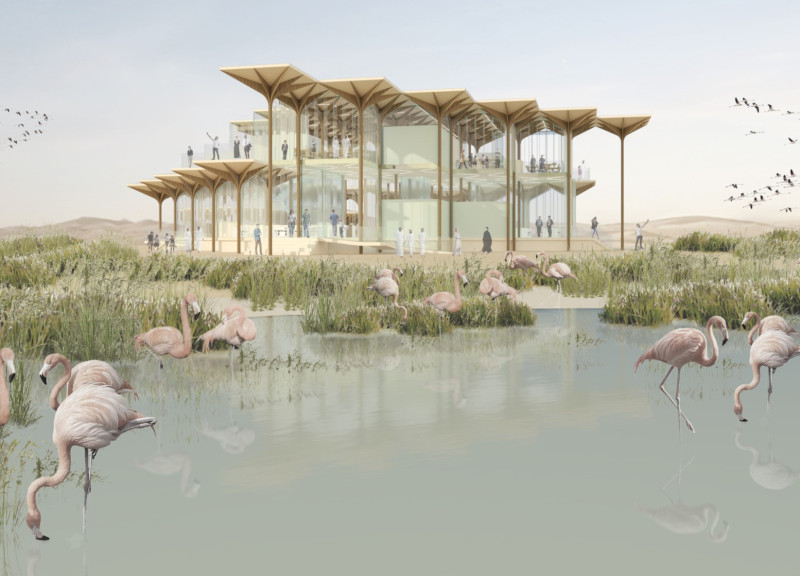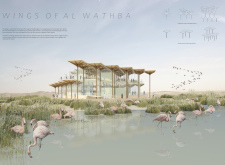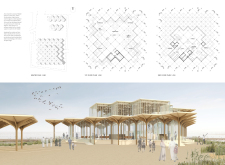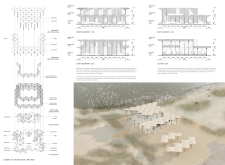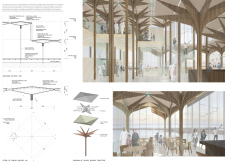5 key facts about this project
"WINGS OF AL WATHBA" is set in the Al Wathba wetland reserve in Abu Dhabi. The visitor center is designed to reflect the beauty and movement of the flamingos that live in the area. The building aims to blend with its surroundings, using a light and clear structure that gives a sense of floating above the wetlands. This approach enhances the visitor's experience of the natural landscape.
Geometric Layout
The design uses a geometric grid system of 4x4 meters, rotated at a 45-degree angle. Each module in this grid serves as a canopy that is supported by thin columns. This layout provides a strong yet clear structure and makes the space feel open. The arrangement echoes classical Middle Eastern architecture while introducing a modern touch.
Transparency and Light
Transparency is an important feature of the visitor center, mainly achieved through the use of insulated tempered glass. This choice allows natural light to fill the interior, connecting people inside with the vibrant environment outside. The ceiling incorporates carefully placed light-holes and ambient lighting at the joints of the modules. This design choice not only brightens the space but also creates a welcoming atmosphere.
Functional Spaces
Inside the building, a raised platform creates an expansive atrium that is suitable for public events and gatherings. On the second floor, a café and training room are positioned next to terraces that offer views of the wetland reserve. This thoughtful arrangement of spaces provides flexibility, allowing the center to accommodate a variety of activities while maintaining a cohesive design.
Climate Control Features
The building includes a pivot shutter system made of insulated glazed panels to manage the climate. This design allows for opening and closing as needed, promoting ventilation while protecting against the elements. Combined with layers of thermal insulation, the structure maintains comfortable temperatures for visitors throughout the year.
The architecture creates a clear connection to the surrounding wetlands. The design emphasizes the delicate form of flamingo wings, reflected in the canopies that extend over the building. This thoughtful detail enhances the overall appearance and underscores the relationship between the structure and its natural setting.


